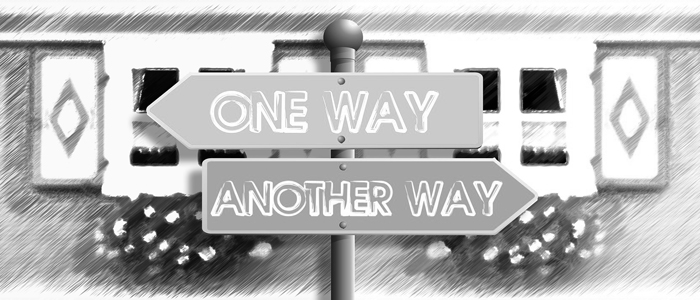We probably all have set ways of approaching problems, finding solutions and ultimately making decisions. What you might not realise is that how you make decisions can be heavily influenced by a mindset derived from questionable reasoning and preconceived ideas. We look at the traps you can fall into.
How you go about making a decision, the thought processes involved and any associated failures of logic have all been well documented. Not only a subject for Nobel-Prize winning psychologist, Daniel Kahneman, but also for security affairs specialist, Zachary Shore.
In his book Blunder, Shore points out the seven traps which can lead you to take a wrong turn or a make a mistake. He makes the distinction between a simple error and a blunder, which is inherently flawed and actually makes the problem worse than when you first started.
Let’s take a look at those seven decision-making traps:
1. Flat view or looking at the world in a single dimension:
Take a look at your approach to the more complex problems you face in business – seeing them through a single lens may well be too simplistic and even naïve. For example, a short-term push for profitability whilst ignoring customer or employee satisfaction, can have negative impact in the medium term.
2. Exposure anxiety or the fear of being seen as weak:
A not uncommon sight in strict hierarchical company structures, business executives can deal unnecessarily harshly with their subordinates as a sign of authority.
3. Cure-allism or thinking that a single action can solve a complex problem:
Similar to the flat view, this is a catch-all tendency to prescribe a single policy solution as the ‘cure for all problems’, whether suitable or not.
4. Causefusion or misunderstanding the cause of a complex event:
You can easily mistake an effect for a cause – for example, your business can commit to spending on innovation but is this as a result of healthy profitability or a cause of it?
5. Static cling or refusing to recognise that things have changed:
This is a trap we can all fall into – not acknowledging that a situation is different from what it used to be and carrying over our assumptions from the past into the present.
6. Mirror imaging or assuming the other side thinks like you:
You’re in a competitive situation but you make the mistake of thinking that your opponents act and think just like you do. Instead, see them for who they truly are.
7. Infomania or fixating on information:
Do you recognise yourself in one of these information-related traits? Are you an infomiser – you relish hoarding information – or an infovoider – you dismiss or ignore information that doesn’t conform to your worldview?
Having described his seven cognitive biases, Shore backs his research up with a number of examples, some of which are drawn from political history. However, when illustrating his choices using business examples, he points out that there is no quick fix solution to extricating yourself from a decision-making trap.
So if you find yourself repeating the same pattern of behaviour when making any type of business decision, whether large or small, take on one Shore’s recommendations:
- become more flexible
- question the majority view
- develop empathy and imagination
Adopt one of these tactics and it will lead to an improvement in your judgement. Not an easy behavioural shift to make, but as Shore says, “these traits are the building blocks of wisdom and they take conscious effort to assemble”.
Thanks to Mike Riddiford’s CEO Forum for inspiration for this blog post.
Contact us on 01865 881056 or email us at info@leaderslab.co.uk if you would like to discuss any of the issues raised in this post.
